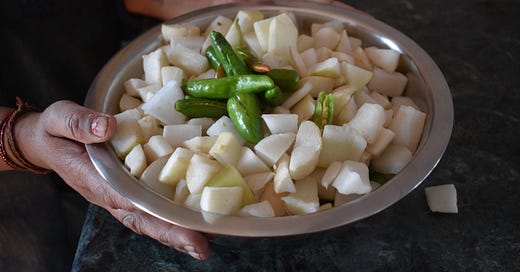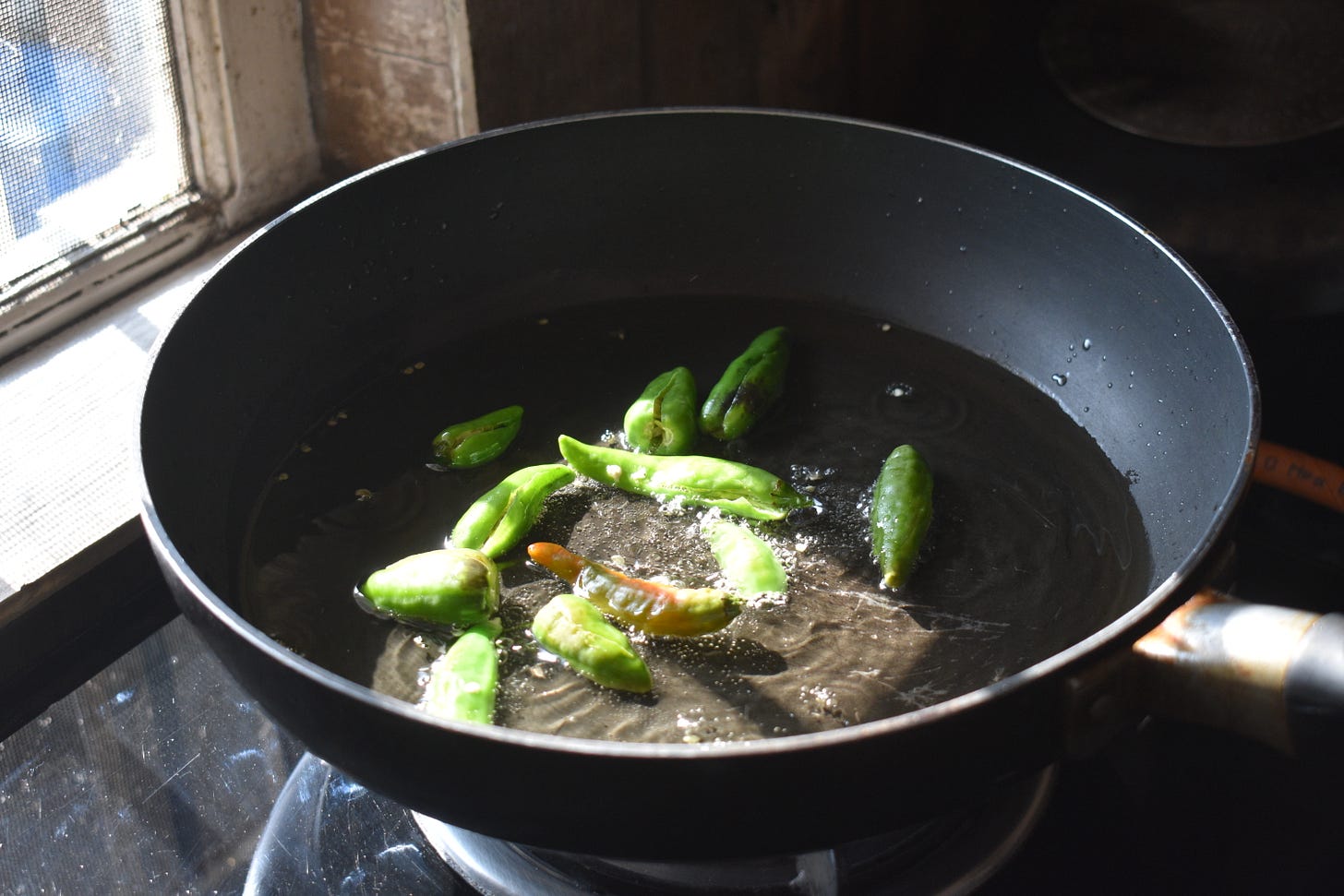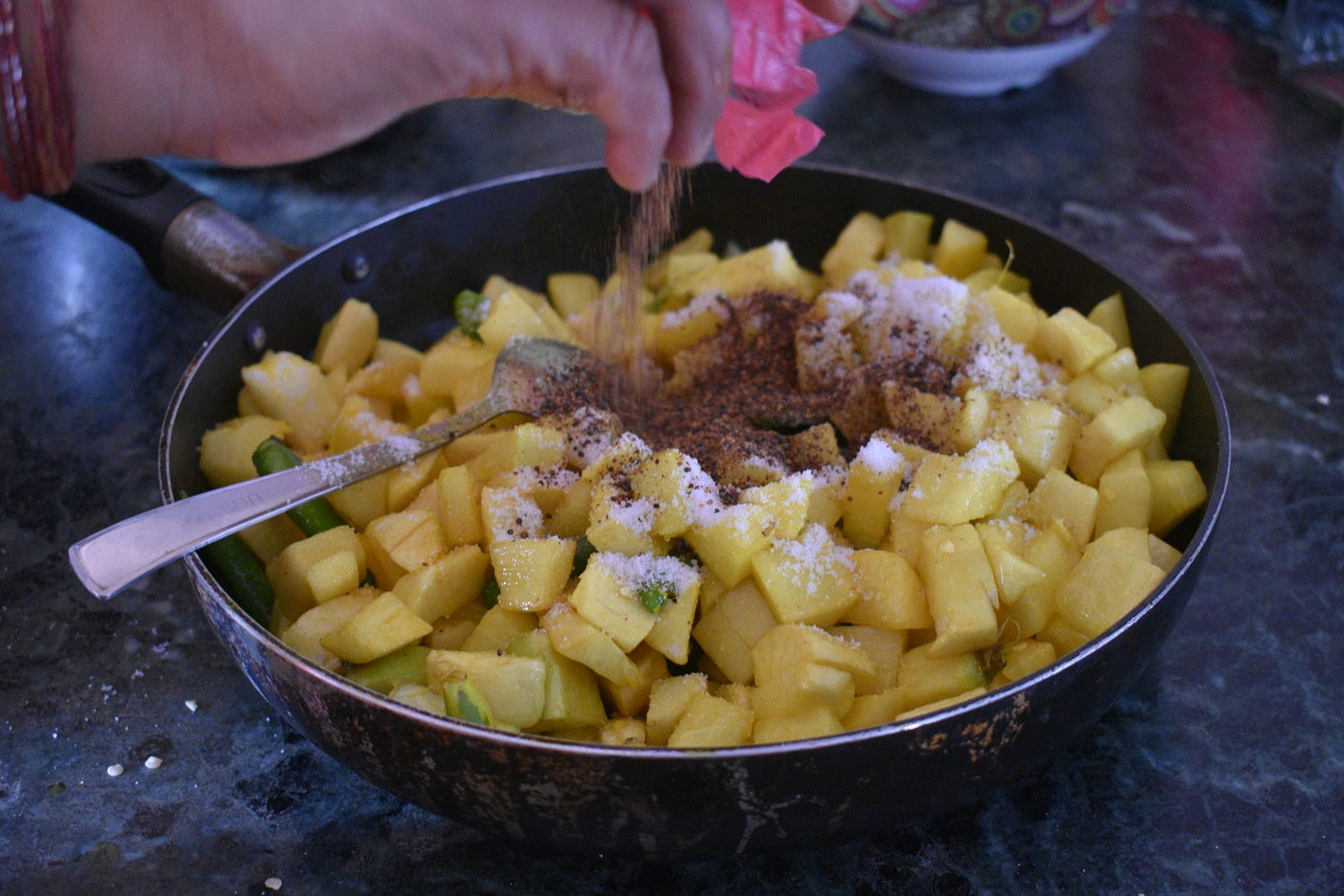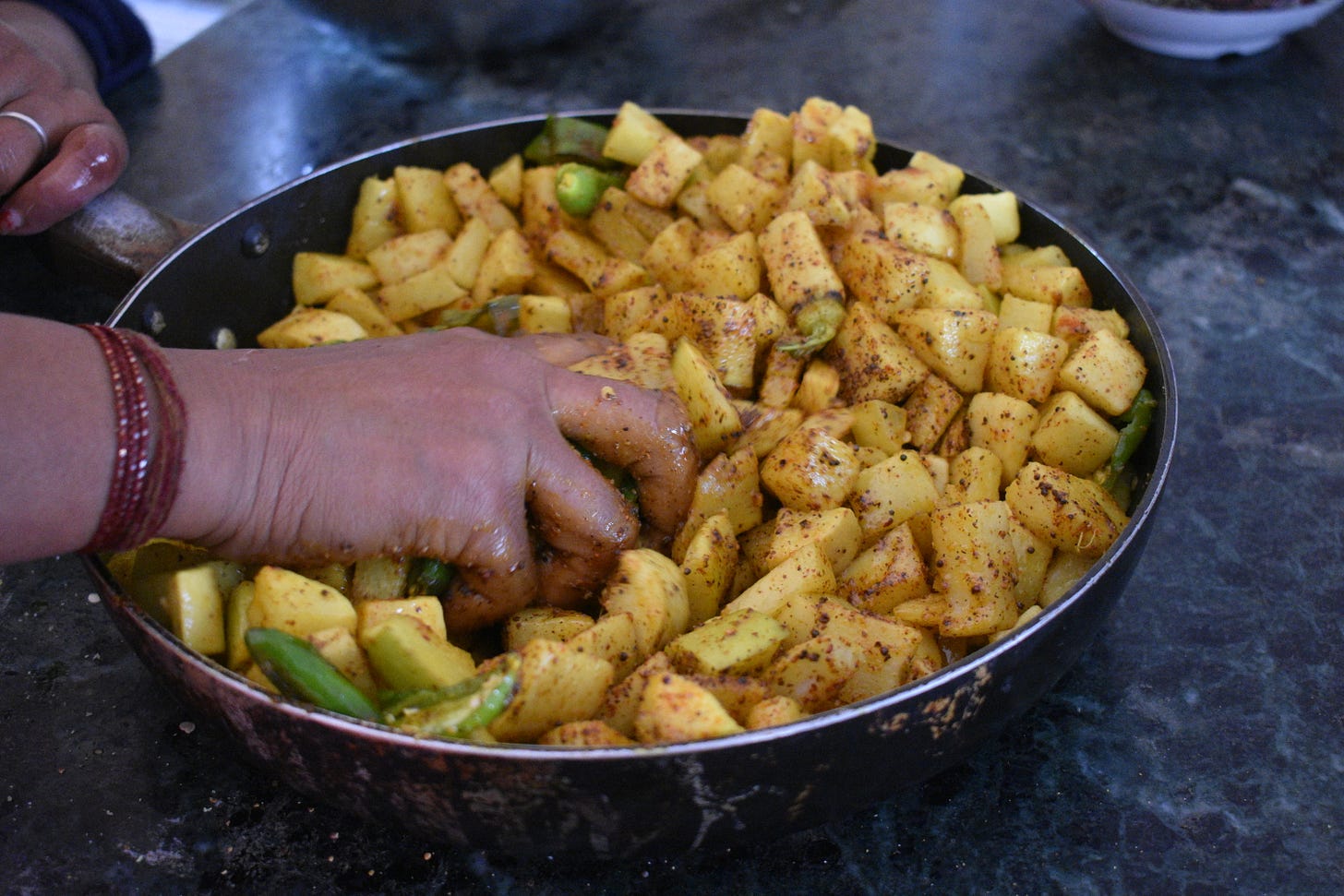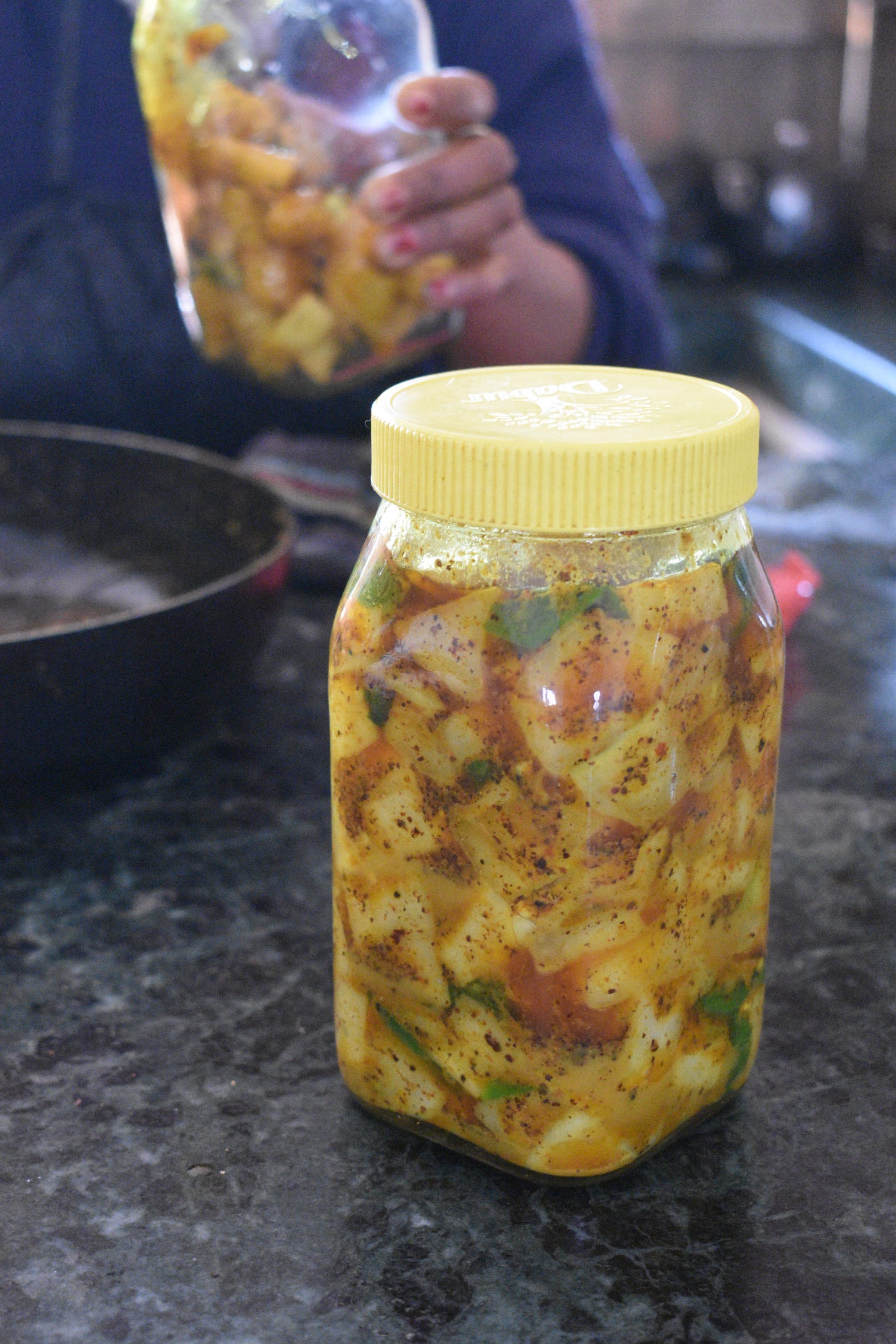Recently, I was gifted a large jar of most excellent mulako achhar—mula being the local name for the large white radish also known as daikon. There are at least two common achhars, or pickles, made with it—that I am familiar with, at least: thepe (smashed) which is a fresh, quick-pickle, and a fermented one. This was the latter. It’s sour and spicy and provides a delightful fresh pop of flavor to a bowl of dal. All in all, an excellent addition to one’s winter pantry.
This achhar was crafted by my friend’s cleaner, Monika, and happily, she was game when I asked if I could come and watch next time she made it.
And that’s where I was last Friday, watching and taking notes and trying to remember all my questions. Cookbooks are all well and good, but if you can watch the process, it’s a whole other level entirely, and watching and listening to Monika I felt increasingly confident that this was something I could make, too. I’m not sure why, but I find fermentation a bit intimidating, like it’s some sort of magical process that may or may not work, and this really demystified it for me.
Chopped daikon and green chilies are left in the sun for a few hours or a day or so, to dry them out a bit, and Monika had already done this, so we began by heating up a good half-inch or so of oil in a frying pan. Usually this would be toriko tel, or mustard oil, but there was none to hand and she said it was fine to use regular vegetable oil.
Once the oil was so hot a tester green chili sizzled, in went the rest of them:
green chilies (about half a pau or 50 grams), which had been topped and split
followed by a healthy amount of turmeric—two or three tablespoons.
The smell when it hit the oil!
The pan is pulled off the flame and into it go
the mula chunks (1 ½ to 2 kilos)
salt (about two small palmfuls)
red chilli powder (10-15 grams)
and dark mustard seeds, roasted and ground up (about 100 grams); these were grown by Monika’s mother in her village, and she is justifiably proud of them.
Then you mix it all together, by hand, sort of squeezing and smushing as you go. This part is very important, and she got me in on it, too. We were both communicating in languages we weren’t fluent in, but if I understood her correctly, this squeezing and hand-maceration is what would lead, later, to the sourness. “You can add cauliflower or carrots, too,” she tells me, though we don’t.
“Isn’t there any lemon in it?” I asked.
“No lemon at all! It’s the sitting”—the fermentation time— “that makes it sour.”
After a suitable time of mula-massaging, she tasted for seasoning, and made me taste it, too. I had no idea what I was tasting for, but it seemed a little salty, and I said so. Apparently, though, it should be a little too salty at this stage, she explained, because as it sours the flavors will balance. Having tasted her earlier work, where the seasoning was just right, I don’t doubt her.
Once Monika is satisfied that everything has been mixed well enough and we’ve taste-tested one more time, it’s time to pack it in large glass jars. She does use plastic containers sometimes, but it lasts longer in glass, she explains. The mula chunks need to be packed in very tightly, and once again hands are the best tool. No loose bits, no air pockets. It fills two one-kilo jars and once every bit is in some of the remaining oil at the bottom of the pan is spooned over, to within about an inch of the top.
The lids are put on “tight but not too tight” and now the jars will spend the next week on a sunny balcony, sitting on top of a plastic bag. They’ll be ready to eat on the seventh day, she explains, and reminds me once again to not forget the bag underneath. Apparently, it’s not uncommon for the jars to leak a little throughout the process—the magic of fermentation—hence the bag to catch any drips.
“My mother taught me to make this when I was 11,” says Monika. “Even my friends can’t make it like this.”
